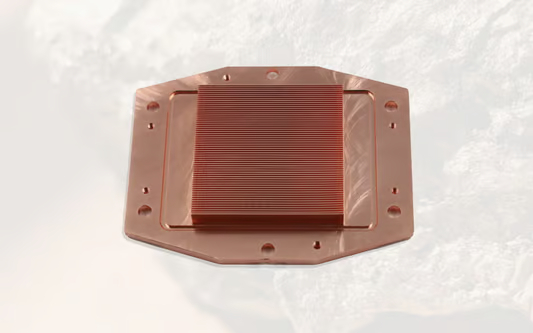Heat Sink Manufacturing Methods: A Comprehensive Guide
The heat sink is an essential component in electronic devices that helps dissipate heat generated by the electronic components. Effective heat sink manufacturing methods are crucial to ensure efficient thermal management and prevent overheating. In this article, we will explore various heat sink manufacturing methods, including extrusion, forging, casting, and additive manufacturing.
1. Extrusion: Efficient and Cost-Effective
Extrusion is one of the most common and popular heat sink manufacturing methods. It involves pushing a heated aluminum billet through a die to create the desired shape. This method is known for its efficiency and cost-effectiveness, making it suitable for mass production.
During the extrusion process, the aluminum billet is heated to its plastic state, allowing it to be shaped easily. The die used determines the final shape and features of the heat sink. The extruded heat sinks typically have fins that increase the surface area for better heat dissipation.
One of the advantages of extrusion is its ability to produce heat sinks with complex shapes and intricate designs. The process also allows for the inclusion of additional features such as mounting holes, grooves, and heat pipes.
Extruded heat sinks offer excellent thermal performance and can be customized to meet specific requirements. They are widely used in applications such as computers, LED lighting, power electronics, and automotive systems.
2. Forging: High Strength and Durability
Forging is another heat sink manufacturing method that delivers high strength and durability. It involves shaping the heat sink by applying compressive forces to the heated aluminum billet using a die. The pressure applied during forging helps align the grain structure, resulting in improved mechanical properties.
Forged heat sinks are known for their exceptional thermal conductivity, which allows for efficient heat dissipation. They are highly resistant to mechanical stress, making them suitable for applications that require ruggedness and reliability.
One of the advantages of forging is the enhanced surface finish it provides. The process eliminates porosity and allows for tight tolerances, ensuring optimal thermal contact between the heat sink and the electronic component.
Forged heat sinks are commonly used in high-power applications such as power amplifiers, motor drives, and industrial equipment. They are also preferred in environments with high levels of vibration and shock.
3. Casting: Versatile and Cost-Effective
Casting is a widely used heat sink manufacturing method that offers versatility and cost-effectiveness. It involves pouring molten aluminum into a mold and allowing it to solidify to obtain the desired shape. Casting can be further divided into two methods: die casting and sand casting.
Die casting is suitable for producing heat sinks with complex geometries and fine details. It involves injecting molten aluminum into a steel mold under high pressure. Die cast heat sinks have excellent dimensional accuracy and surface finish.
Sand casting, on the other hand, is a more economical casting method. It involves creating a mold using sand and pouring the molten aluminum into it. Sand casting is suitable for producing heat sinks with larger sizes and simpler designs.
Cast heat sinks offer good thermal conductivity and can be customized with various surface treatments such as anodization and powder coating. They are widely used in consumer electronics, telecommunications, and automotive applications.
4. Additive Manufacturing: Design Freedom and Complexity
Additive manufacturing, also known as 3D printing, is a relatively new heat sink manufacturing method that offers design freedom and complexity. It involves building the heat sink layer by layer using a computer-controlled process.
One of the key advantages of additive manufacturing is the ability to create complex geometries and internal structures. This allows for the optimization of heat dissipation and weight reduction. Additive manufacturing also eliminates the need for tooling, making it cost-effective for low-volume production.
Various materials can be used in additive manufacturing, including aluminum alloys, copper alloys, and even ceramic composites. The choice of material depends on the specific application requirements.
While additive manufacturing offers design freedom, it may not always match the thermal performance of other manufacturing methods. However, ongoing advancements in materials and processes are continually improving the thermal properties of additively manufactured heat sinks.
Conclusion
Heat sink manufacturing methods play a crucial role in ensuring efficient thermal management in electronic devices. Extrusion, forging, casting, and additive manufacturing are some of the common methods used to produce heat sinks.
Extrusion is known for its efficiency and cost-effectiveness, allowing for the production of heat sinks with complex shapes. Forging offers high strength and durability, making it suitable for rugged applications. Casting provides versatility and cost-effectiveness, while additive manufacturing offers design freedom and complexity.
Understanding the different heat sink manufacturing methods allows engineers and designers to choose the most suitable method based on the specific requirements of their application. By selecting the right manufacturing method, optimal thermal management and performance can be achieved.

